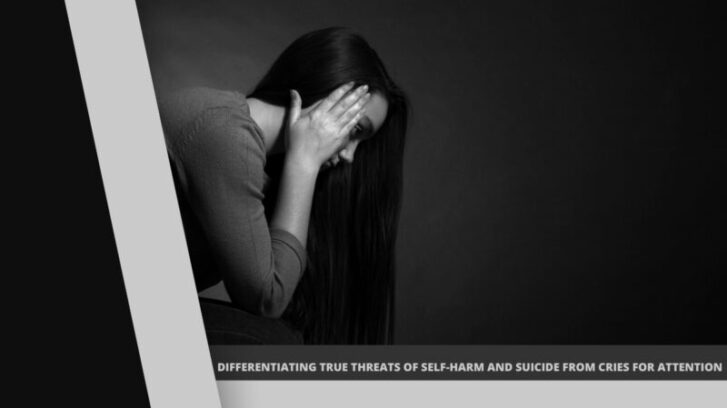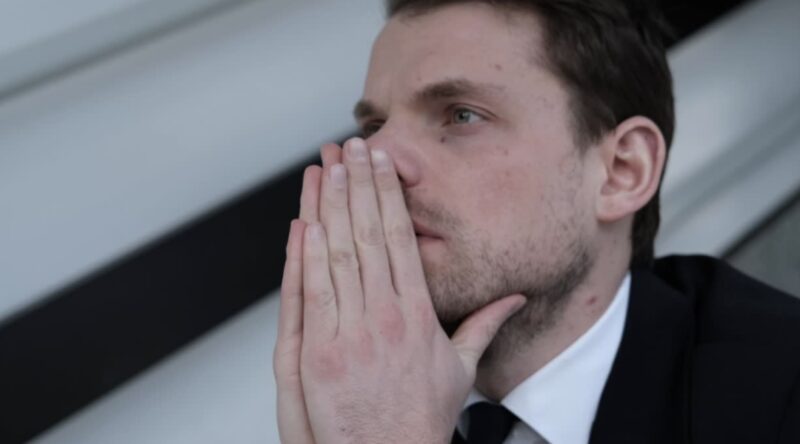Self harmIn the intricate tapestry of human emotions and behaviors, the threads of self-harm and suicide weave a particularly complex pattern. These are not topics we discuss over a casual cup of coffee, nor are they subjects we can afford to sweep under the rug. They demand our attention, our understanding, and our compassion. They call for us to step out of our comfort zones and into a realm that can be as confusing as it is heartbreaking.
Why? Because understanding the nuances between true threats of self-harm or suicide and cries for attention is not just a matter of academic interest. It’s a matter of life and death. It’s about being able to reach out a hand just when someone needs it the most. It’s about being able to say, “I see you, I hear you, and you don’t have to face this alone.”
Note: Sometimes people self-diagnose themselves with depression and anxiety when they only want attention.
Unfortunately, this is a realm shrouded in misconceptions. Too often, cries for help are dismissed as attention-seeking, while genuine threats go unnoticed until it’s too late. These misunderstandings can lead to responses that, though well-intentioned, can be more harmful than helpful.
This article is an invitation to journey into this complex territory. It’s an opportunity to gain insights that can help us better support those who are wrestling with these dark thoughts and feelings. It’s a chance to learn how to respond in ways that validate, comfort, and encourage healing.
Motivations behind Self-Harm
Self-harm is a complex behavior that often serves as a coping mechanism for individuals grappling with intense emotional pain or distress. It’s a way for them to externalize their internal turmoil, providing a temporary sense of relief from feelings of sadness, anxiety, or emptiness. However, it’s a harmful and dangerous strategy that doesn’t address the root causes of these emotions.
Moreover, self-harm can be a manifestation of various underlying issues, such as depression, anxiety disorders, borderline personality disorder, or past trauma. It’s a cry for help, a way to regain control, or a form of self-punishment. Understanding these motivations is crucial in providing appropriate help and support.
- Self-harm can be a coping mechanism for intense emotional distress.
- It can be a manifestation of underlying mental health issues.
- It can serve as a form of self-punishment or a way to regain control.
Motivations behind Suicide
Suicidal ideation and attempts are often the result of a complex interplay of factors, including mental health disorders, life circumstances, and feelings of hopelessness or despair. It’s a severe and tragic response to perceived insurmountable challenges. Individuals may see suicide as the only way out of their suffering, a final act of control over their lives, or a means to end their pain.
Moreover, certain factors can increase the risk of suicide, such as a family history of suicide, previous suicide attempts, substance abuse, access to lethal means, and a lack of social support. Recognizing these factors can help in early identification and intervention.
- Suicide can be seen as the only way out of intense suffering.
- It can be a final act of control or a means to end the pain.
- Certain factors can increase the risk of suicide, such as a family history of suicide and lack of social support.
Signs of True Threats of Self-Harm
Genuine self-harm intentions may be indicated by unexplained injuries, withdrawal from social activities, and changes in mood or behavior. Individuals may start to isolate themselves, lose interest in activities they once enjoyed, or exhibit sudden and drastic changes in their behavior or appearance. Verbal cues can include expressions of self-loathing, hopelessness, or a desire to escape from pain.
Additionally, individuals may start to give away their possessions, write goodbye letters, or make final arrangements. They may also show signs of increased substance use or reckless behavior. These signs should never be ignored, as they may indicate a serious risk of self-harm.
- Unexplained injuries, withdrawal, and changes in mood or behavior can indicate self-harm intentions.
- Verbal cues can include expressions of self-loathing, hopelessness, or a desire to escape pain.
- Giving away possessions, writing goodbye letters, or making final arrangements can also be warning signs.
Signs of Cries for Attention
While it’s essential to take all signs of distress seriously, some behaviors may be more about seeking attention or expressing emotional pain than a genuine intent to self-harm. These can include dramatic but non-lethal self-harm gestures or threats, especially if they occur in public or are communicated directly to others. These actions are often desperate attempt to communicate their distress and seek help.
However, it’s important to note that even if these actions are primarily attention-seeking, they still indicate a high level of emotional distress that needs to be addressed. Dismissing them as mere attention-seeking can exacerbate the individual’s feelings of isolation and despair.
- Dramatic but non-lethal self-harm gestures or threats can indicate cries for attention.
- These actions are often a desperate attempt to communicate distress and seek help.
- Even if primarily attention-seeking, these actions still indicate a high level of emotional distress
The Importance of Validation and Support
When someone expresses feelings of distress or engages in self-harm or suicide-related behaviors, it’s crucial to provide genuine support and validation. Dismissing their feelings or behaviors as mere attention-seeking can exacerbate their distress and potentially escalate the situation.
Validation involves acknowledging and accepting the individual’s feelings and experiences, even if you don’t fully understand or agree with them. It shows the individual that you’re taking their distress seriously and that you’re there to support them. This can help to alleviate feelings of isolation and hopelessness, and can encourage the individual to seek help.
Support can take many forms, from listening empathetically and offering comforting words, to helping the individual access mental health services or other resources. It’s important to approach the individual with kindness, patience, and non-judgment, and to avoid making assumptions or offering unsolicited advice.
- Validation involves acknowledging and accepting the individual’s feelings and experiences.
- Support can take many forms, from listening empathetically to helping the individual access resources.
- It’s important to approach the individual with kindness, patience, and non-judgment.
Role of Mental Health Professionals and Support Networks
Mental health professionals play a crucial role in supporting individuals who are struggling with self-harm or suicidal thoughts. They can provide assessment, treatment, and ongoing support, and can help the individual to develop healthier coping strategies.
Support networks, including friends, family, and community groups, can also provide invaluable support. They can offer emotional support, can help the individual to access professional help, and can provide a sense of connection and belonging.
However, it’s important for everyone within these networks to be educated about self-harm and suicide, including how to recognize the signs, how to provide support, and when and how to seek professional help. This education can help to ensure that individuals in distress receive the help and support they need.
- Mental health professionals can provide assessment, treatment, and ongoing support.
- Support networks can offer emotional support and can help the individual to access professional help.
- Education about self-harm and suicide is crucial for everyone within these networks.
Supportive Strategies for Attention-Seeking Behaviors
Encouraging healthier ways to express emotions and seek attention can be beneficial. This could involve promoting open communication, teaching coping strategies, and fostering a supportive environment.
Final Words
Understanding the differences between true threats of self-harm and suicide and cries for attention is vital in providing the right kind of help and support. By educating ourselves and fostering open dialogue, we can help reduce the stigma surrounding these issues and ensure that those in distress receive the help they need.
Remember, every cry for help, whether it’s a genuine threat or a call for attention, is a sign of deep emotional pain that should never be ignored.
Related Posts:
- Dangers of Self Diagnoses - How It Can Harm Your Health
- The Benefits and Importance of a Support System - A…
- Mastering the Art of Boring Self-Care: Elevate Your…
- 6 Essential Traits of People With a Strong Character…
- 7 Ways Video Self-Modeling Can Help Your ASD Child
- Top 10 Best Self-Compassion Exercises in 2024 -…

















